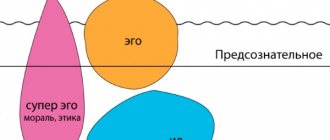Production process management is a set of measures that are taken to determine the tasks facing the organization, as well as the stages of their implementation. When planning, it is important to take into account the size of the company, its specialization, and the range of products produced. A mistake in this matter can lead to serious financial losses. Therefore, it is very important to carry out calculations carefully, taking into account all factors. In this article we will look in detail at the basics, tasks of production planning at an enterprise, what methods and rules exist in this area.
Concept of production plan
Strategy development is one of the administrative activities of a company. To summarize, this includes decisions that affect the volume of raw materials used, the number of employees, and much more. The PP may contain information about:
- marginal profit;
- quality control;
- the required quantity of purchased materials;
- unit cost of goods;
- state of staff;
- application of capacities;
- analysis of premises that are at the disposal of a legal entity;
- regulation of reporting;
Please note that general information is provided here. The structure may vary depending on the profile of the company.
Key benefits of weekly scheduling:
- longer planning horizon compared to one day
- Saving employee time and significant savings of manager time
Go to contents
Weekly work plan
- How to make a plan?
- Go through all monthly project plans, take from them a list of tasks with a deadline by the end of the week + 5 days.
- Open your monthly work plan and write out some of the work from there.
- Include operational tasks (previously known or set by the manager) into the weekly plan.
- Tasks must be planned for the entire work week, taking into account the time reserve for introductory tasks (determined for each position individually).
- after all, that’s why the tasks and “unforeseen” ones may or may NOT exist.
- if the plan was not completed due to the fact that newly received tasks were being completed, then some of the tasks from the plan can be transferred to the next week.
Go to contents
Why compile it?
Production planning at an enterprise is often carried out intuitively, without a clear scheme. But this approach does not allow the process to be streamlined as much as possible.
A well-designed software helps management solve several problems. Among them:
- expanding the customer base, increasing the degree of loyalty of existing customers;
- increase in the quality of goods or services provided;
- reducing costs and detailing existing ones;
- reduction in the number of loans;
- formation of a resource reserve in case of unforeseen situations;
- creating a strategy that is relevant under different circumstances.
Planning production at an enterprise is a necessary part of the work, especially when it comes to large organizations.
An equally important part of the company’s functioning is the automation and optimization of routine processes in order to reduce costs, increase profits and reinvest finances in business development. This happens due to technological innovations, for example, the introduction of specialized software. The Cleverence catalog presents a wide range of solutions that are suitable for different areas of business: from retail to the manufacturing sector.
Enterprise development
The enterprise development plan implies fundamental changes in both the economic and organizational systems of the company. At the same time, significant financial and technological growth should be observed. The central place is occupied by an increase in the volume of products produced and, as a consequence, net profit.
A strategic development plan for an enterprise can be developed in the following main areas:
- improvement of the production program;
- introduction of achievements of scientific and technological progress;
- increasing production efficiency by increasing labor productivity and material productivity;
- a plan for the construction of new structures, as well as the installation of new equipment;
- improvement of personnel structure and composition;
- improving the social status of workers;
- introduction of environmentally friendly production systems.
Ready-made solutions for all areas
Stores
Mobility, accuracy and speed of counting goods on the sales floor and in the warehouse will allow you not to lose days of sales during inventory and when receiving goods.
To learn more
Warehouses
Speed up your warehouse employees' work with mobile automation. Eliminate errors in receiving, shipping, inventory and movement of goods forever.
To learn more
Marking
Mandatory labeling of goods is an opportunity for each organization to 100% exclude the acceptance of counterfeit goods into its warehouse and track the supply chain from the manufacturer.
To learn more
E-commerce
Speed, accuracy of acceptance and shipment of goods in the warehouse is the cornerstone in the E-commerce business. Start using modern, more efficient mobile tools.
To learn more
Institutions
Increase the accuracy of accounting for the organization’s property, the level of control over the safety and movement of each item. Mobile accounting will reduce the likelihood of theft and natural losses.
To learn more
Production
Increase the efficiency of your manufacturing enterprise by introducing mobile automation for inventory accounting.
To learn more
RFID
The first ready-made solution in Russia for tracking goods using RFID tags at each stage of the supply chain.
To learn more
EGAIS
Eliminate errors in comparing and reading excise duty stamps for alcoholic beverages using mobile accounting tools.
To learn more
Certification for partners
Obtaining certified Cleverence partner status will allow your company to reach a new level of problem solving at your clients’ enterprises.
To learn more
Inventory
Use modern mobile tools to carry out product inventory. Increase the speed and accuracy of your business process.
To learn more
Mobile automation
Use modern mobile tools to account for goods and fixed assets in your enterprise. Completely abandon accounting “on paper”.
Learn more Show all automation solutions
Working day planning methods
There can be many methods for properly planning your workday. But one of the most effective is the Eisenhower Matrix. Its essence is as follows.
There are 4 squares:
- Square A - Urgent and important matters.
- Square B - non-urgent and important matters.
- Square C - urgent and unimportant matters.
- Square D - non-urgent and unimportant matters.
Square A should almost always remain empty. With proper planning, all important tasks should settle in square B and be completed as they approach A.
Square B is about important things that will help you achieve your goal. This includes all tasks that need to be completed within 1 business day.
Square C means urgent and unimportant tasks that need to be delegated to others. A prime example of urgent but unimportant matters is calling a potential client. An employee can do this, you better focus on other things.
Square D means that there are non-urgent and unimportant things that do not bring you closer to your goal, do not give positive emotions and, in principle, are not needed. All useless ideas should be written down in this square.
This division of tasks according to their importance and urgency allows you to understand what you need to pay attention to during the working day, and what you can safely forget about. The matrix helps not only in work processes, but also in everyday life. If you want to learn English, it is interesting to you and will help you in your career - this is square B. But if you want to learn Spanish just for the sake of knowing it, this is D, and you can safely forget about it.
Goals and functions
To summarize, the main task of the PP is to compile a forecast for the development of the company. It helps determine what management and employees need to achieve for a specific time period. As a result, solutions must quickly appear and be implemented in the process of economic and financial activities.
In a market economy, this is more difficult to do than in planned production - this is due to the fact that there is no centralized management of companies. Therefore, managers have to independently determine prospects in the face of constant competition. The management of small offices often does this “by touch”, without applying any schemes or strategies. But the larger the scale of the business, the more acute the need for a clear and structured program. Without it, it is impossible to achieve coordinated functioning.
Long-term plans
Long-term plans are the most important component of the activities of managers, which largely determines the efficiency of the company as a whole. During their development, not only specific goals should be specified, but also the resources that will be used to achieve them. In addition, the timing of the implementation of planned activities must be determined. We can say that it is necessary not only to determine the directions of activity, but also to anticipate options for the development of the situation in the external environment.
Long-term plans are based on forecasts regarding the future economic situation both inside and outside the organization. The period for drawing up such a program can cover a period of time up to 15 years.
Component chain links
Planning the production activities of an enterprise includes 4 main components:
- tactics;
- strategy;
- production program;
- the dates on which each stage should be carried out.
When developing software, you need to rely on two key concepts: priority and performance. The first means the assortment, volume of goods and timing of its release. These values are set based on the market situation. The second is the number of products made per unit of time.
What is included in activity planning?
Planning is a managerial task. The work takes place in three basic areas:
- Determination of the current state of the enterprise . The task is divided into assessing the economic condition of the company and determining the areas in which the enterprise operates most efficiently. Areas in which urgent improvement is required must also be identified. Based on the current state, it is possible to establish what goals can be achieved with available resources.
- Definition of strategic objectives . They are calculated based on the competitive environment, technology, wishes of management, and market situation.
- Determination of available and required resources . The concept of resources includes technology, equipment, and personnel.
Based on these tasks, we can derive the structure of planning work:
- Finding realistic goals.
- Determining indicators on the basis of which the company’s activities can be assessed from a strategic point of view.
- Finding a list of priority tasks that can be solved in a given situation and with available resources.
- Establishing a flexible planning methodology that will achieve the goals previously defined.
Planning is a complex task that no developing enterprise can do without.
Principles
When drawing up a diagram, you should follow several rules. First of all, continuity. The enterprise's production plan must remain relevant at all stages of production. In addition, unity must be ensured. This means that the PP must take into account the connections between types of work. The next principle is efficiency. Following the scheme, the company's management must optimize the process as much as possible and reduce costs.
Another requirement is flexibility, so that if unforeseen situations arise, adjustments can be made to the plan. Accuracy is also important to consider. It should be enough to complete the task without errors. All branches of the organization within the plan are connected with each other.
Financial planning
The financial plan is inextricably linked with the development of economic and social issues. It reflects the use of material resources, as well as the planned cost of finished products. Also, when drawing up this document, the use of existing material reserves and financial resources should be provided in order to improve the production process.
A financial plan is similar in form to a balance sheet. It must clearly state all the items that relate to the revenue and expenditure parts. The income section displays transactions such as income from participation in capital, interest on deposit accounts, etc. Speaking about costs, they note depreciation, debt repayment, and so on.
How is compilation done?
The production planning department is responsible for this part of the administrative activities. Below we will consider all the stages in detail.
The main problem facing specialists is the need for the most rational use of capacity. If they exceed sales volumes, then underutilization occurs. Its consequences include, for example, increased costs. In turn, this leads to a drop in company profits. If income is below the required value, then the company will not be able to produce the required amount of products.
The program is developed for a year. Tasks are distributed by quarters and months.
Compound
Planning the production process at an enterprise ends with drawing up a strategy, which is drawn up in the form of an official paper. It has a certain structure. It is worth sticking to it to avoid confusion. It contains:
- Front page.
- Content.
- Basic information about the company.
- Data about goods or services provided.
- Organizational plan.
- Marketing scheme.
- PP.
- Information about investments and finances.
- Applications.
The last point is needed to add clarifications that may be needed during the work process.
How to determine capacity utilization
First of all, it is necessary to conduct a market analysis to identify the most popular products among potential consumers.
The second stage is drawing up a commercial forecast. In other words, managers estimate how much of a certain type of product can be sold. Based on these figures, a discussion is underway as to whether the equipment available is sufficient to achieve the set goals. If not, then a decision is made on the advisability of purchasing additional units of equipment. They need to be listed in the PP. In addition, you need to indicate the amount spent on wages, staff and expenses for business needs.
Display of current production planning in the document
Before releasing goods, it is necessary to establish how it will be carried out. To do this, the organization’s employees should conduct an in-depth analysis of the company’s supply of machines and personnel. Afterwards, the most effective, from a commercial point of view, option is selected. In this case, employees make a choice between:
- low and high level of automation;
- using standard or customized technology;
- productive or flexible system.
It is important to take into account the specifics of the operation of the enterprise. If a product is being manufactured for the mass market, it is recommended to use the conveyor method. It is simple and provides minimal costs. This approach is acceptable for most companies. However, if you have to fulfill special orders, you will have to use alternative solutions. These aspects need to be recorded in the PP.
Principles of planning
All types of plans are drawn up on the basis of certain principles:
- objective necessity dictated by modern economic conditions;
- all indicators must be specific and have a numerical dimension;
- the plan must have clear time boundaries;
- all figures must be realistic and justified (based on the availability of resources at the enterprise);
- the form of the program must be flexible so that it is possible to adapt to changes in the external and internal environment;
- planning should be carried out comprehensively and cover all areas of the enterprise’s activities;
- programs for all structural divisions should not contradict each other;
- all plans drawn up and certified are binding;
- focus on achieving maximum economic results;
- At each stage, several alternatives must be developed, among which the optimal one is subsequently selected.
Compliance with these principles allows you to make plans realistic, detailed, and most importantly - effective.
Types of planning and organization of work at a production site
There are several classifications of this type of activity according to various criteria. First of all, these are deadlines. The depth of the calculations performed directly depends on the time spent. According to this criterion they are divided into:
- promising;
- current;
- operational.
The first type differs in that employees take into account the period of validity of the production of goods, which can be predicted. The second is characterized by drawing up a program for one year. Tasks are distributed across quarters. The latter type is used in conditions where it is necessary to produce the required quantity of products in a sufficient range and within the prescribed time frame. This uses the smallest cycle.
The next criterion is the prospects, as well as the goals and objectives of production planning. Strategic is used to open up new paths and opportunities for the organization. The global aspirations of the company are taken into account.
Tactical serves to implement the settings developed at the previous stage. Another function is to create opportunities to increase production volumes and capacity productivity, reduce costs, and improve product quality.
The third type is a business plan. It is necessary to assess the feasibility of implementing projects or attracting capital investments from outside.
Also, production site programs are classified according to the degree of mandatory tasks. There are directive and indicative.
The goals that are set during the first type of planning are subject to unquestioning implementation within the established time frame. Moreover, the second type includes tasks that are advisory in nature. They serve only to set the desired direction for the functioning of the company. Urgent orders are allowed, but their number should not be large.
Another parameter used is structure features. According to management levels, production plans are:
- corporate – developed for a holding or concern;
- for independent entities - a company or a branch;
- for departments - workplace, workshop, site.
Life planning
Film “Interview with N.I. Kozlova"
To determine your life priorities, you need to look at your life as a whole, from its end.
Life planning is a person’s planning of the main events of his life: what and when he will have, will happen, will happen. Planning your life does not guarantee that the plan will happen, but your lack of a life plan guarantees that life either happens by chance or unfolds according to other people's plans.
Vision of my life: “Well, I’ll finish school, go to college, start working, then get married... Well, we’ll probably have a child, we’ll decide on an apartment, a car and a dacha. Then retire - and retire!” - not life planning, but reproduction of a standard template. This is a story about how it usually happens with people, and an acknowledgment that my life will flow like everyone else’s, along a well-trodden rut.
Life planning is the construction of a specific plan for your life for a year, 3 years, 5 and 10 years and beyond, where high and inspiring goals are set. The first person who began to plan his life (among famous people) was Benjamin Franklin.
Like long-term plans, life planning is a fairly rare phenomenon. Hardly more than 3% of the Russian population have well-thought-out plans for their lives, especially well-thought-out and written plans.
Most people live without setting any goals for themselves: setting goals is completely replaced by hopes, dreams, fantasies, grief that “everything is wrong” and generally nothing: either the phone rang, or there’s a great movie on TV.
A plan is a leap into the future. Your daily plan is your future today. A monthly and quarterly plan is the future of an effective organization. Your plan for the year and for life is your future. There are few people who live in the future.
How many people do you meet who seriously plan their lives, in the evening they build a picture of the day ahead of them, in the morning they set tasks for themselves, make a plan for the day and implement this plan?
Why do you need life planning?
Both the most successful and the most worthless person on the planet have 24 hours in a day. But the first achieves a lot, while the second can get stuck in a swamp of failures. The secret of this discrepancy is how and with what these 24 hours are filled. The first one views life as a long-term project, while the second one, most likely, thinks little about the future - lives for today and nothing more. Life planning is important for those who approach their lives responsibly, who want to do and achieve a lot in life. Life planning usually attracts result-oriented people and worries process-oriented people, as it forces life into a certain framework.
What would you say to the builders who, getting ready to build your dacha, would ask for money in advance and say: you know, we won’t draw the project, this reduces the freedom of creativity, and in general we are not used to it. Whatever happens, we’ll build it. Would you give them money? There is a feeling that no. Now imagine that you are building a life. Do you have a project for your life? Is this less responsible for you? Would you give yourself money as a life builder?
Life planning is thinking through your life so that its result will definitely please you. It is necessary to develop business and life success, improve the ability to build relationships, strengthen your health and improve the well-being of yourself and your loved ones: create a life base. You can dream beautifully, but serious people think about the end result.
Vasya was a creative person, and working through sleepless nights, he wrote very soulful poems in his village. His girlfriend Masha and his friend Fedya liked the poems, as a result of which, based on common interests, Masha married Fedya, who also made good money as a machine operator. On this occasion, Vasya wrote another collection of poetry and sent all his poems to the city... When Vasya was dying, his soul was warmed by a small gray brochure: the poems were still published in a meager edition, although they were never sold out. Since Vasya was extremely poor, his funeral was organized by Masha and Fedya, who had long ago built a strong house, raised children and planted a beautiful orchard. Of course, no one could call Fedya, unlike Vasya, an exalted and creative person, but how would you evaluate the result of their life?
Moral: the success of a project is determined not by the strength and loftiness of intentions, but by the amount of results actually achieved. (“The formula for success or the philosophy of life of an effective person”)
Myths about life planning
A planned life is boring. Never true. A planned life allows you to accommodate a much larger number of events and adventures. Imagine that, when you were getting ready to go on vacation, you put your things into a suitcase somehow: it won’t fit much. And if you folded your things neatly, you filled the vacated spaces with small things—more would fit into your suitcase. It's the same in life.
The plan limits development. This is if the plan is small, simple and uninspiring. And if you wrote Maximum Life and suddenly realized that there is very little time, and there is a lot to do, you will develop at triple the speed!
A plan does not give freedom of creativity . And that's not true. No one is stopping you from revising and finalizing your plan every day, month, year, three years, so that you can correct what has already been written and add something new.
A planned life does not allow you to enjoy the present . Nonsense - it just gives, and with a reserve, especially if you plan it. And if you don’t know how to plan, you will enjoy the present only in fits and starts and to your own detriment. See Hurry up to live in the present
Smart planning
Competent life planning is thinking through the optimal routine and general direction of life that corresponds to your life values. Such planning not only does not exclude rest and entertainment in a person’s life, on the contrary, in some cases it obliges you to rest, even if you are lazy. Competent life planning helps self-control, develops self-esteem, inspires optimism, gives concentration and energy. You can start planning your life with the simplest thing - with a list of to-dos and activities for each coming day.
Life planning can be compared to a multi-story building, at the base of which (the basis of your planning) are your personal life values as a person. This is where planning should begin.
If you have lived a long and difficult life, and at the end of it you realized that you do not need and are not interested in such a life, then it will be too late to change anything... If, on the contrary, you know well what you want in life, what for you are truly dear, every day of your well-structured life will become filled with meaning for you.
Once you have decided on your values, start setting your life goals. The more clearly and specifically you can see the desired end result, the better. Long-term life goals are more difficult to set exact parameters, but deadlines and other specific numbers will help you understand how effectively you are moving in your chosen direction.
To move through life more effectively, pay attention to the people who surround you every day. Take a look from this point of view at your friends, at your relatives and colleagues at work; it happens that the usual environment does not in any way contribute to the speedy achievement of your goals, and sometimes, moreover, it takes you away from your goals. Perhaps part of your life planning could be taking inventory and choosing your environment.
An important point in planning your own life is a personal development plan. What are you going to teach yourself today, in the next week, in the next month and year? Even if you have complete order with your environment, values and goals, you may not have enough basic life skills and useful habits to fully plan your life. For example, the habit of putting everything off until later will have to be replaced with the habit of doing everything on time.
If you have established your life and feel that you are capable of great things and achievements, think about your Maximum Life.
Life can be amazingly beautiful - let's make it that way!
Strategy and tactics
This point must be analyzed in order to study the structure of the process in more detail. These are two types of programs that serve specific purposes. The first should be implemented in accordance with the chosen direction of the organization’s activity, volumes of goods produced, the amount of labor resources, as well as product sales plans. It is important to note that the production planning strategy should be based on long-term forecasts.
To achieve the goals outlined in the first stage, you need to resort to tactics. The production plan should provide detailed information about the state of the enterprise. In particular, the availability of raw materials in the required volume, the level of staffing, and the vehicles that the company has. In addition, data is required on the activities to be carried out to implement the program and their timing. As additions, information on the cost per unit of production is attached.
Plans and planning
Planning is the activity of determining the future state and functioning of the company. It plays a huge role in the activities of the organization and carries several important functions:
- determining the development prospects of the enterprise;
- ensuring savings in material resources;
- reducing the risk of ruin and bankruptcy due to unforeseen fluctuations in the economy;
- timely response to changes in market conditions;
- increasing work efficiency.
A plan is an approved document that contains a specific list of actions, goals, methods and digital indicators compiled for a specified period. In addition, it includes information about available and missing resources, which are designed to ensure the most complete compliance of the results obtained with those previously stated.
What is the main method of production resource planning and what factors are taken into account
There are several methods. The first is balance sheet. Its essence lies in comparing the company's needs and equipment. This takes into account the number of employees, the availability of materials, equipment and finances. In the absence of balance, experts look for ways to achieve it. This approach gives management the opportunity to assess the level of capacity that the organization has, its dynamics in the future and the degree of utilization. You can also monitor the market. For this purpose, a production plan is drawn up.
The second method, which has proven itself well, is technical calculation planning. It is used when necessary in calculating the economic efficiency of a company’s activities, the feasibility of attracting investments and issuing securities. The basis of the method is the use of a system of norm groups. These include:
- required level of labor input;
- funds in circulation;
- quality of goods;
- other.
Another common approach to a production planning system is calculation and analytical. Its essence lies in a comprehensive assessment of the state of the company for a selected period. Its potential changes and factors that may influence this are also taken into account.
Enterprise annual plan
Almost every manufacturing (and even non-manufacturing) enterprise considers it obligatory to draw up a work plan for the year. It specifies such points as the costs of producing units and parts, as well as the cost of finished products, the revenue expected to be received, as well as the amount of mandatory payments.
The annual plan is something like a forecast. It is based on development trends of the enterprise itself, as well as the industry and market as a whole. These forecasts are based on data from previous periods, taking into account possible deviations and unforeseen fluctuations in the economy.
In large enterprises, it is not enough to draw up an annual plan just for the organization as a whole. Financial calculations and detailed economic indicators for each division are required. Moreover, such plans must be interconnected and have no contradictions.
Ready-made solutions for all areas
Stores
Mobility, accuracy and speed of counting goods on the sales floor and in the warehouse will allow you not to lose days of sales during inventory and when receiving goods.
To learn more
Warehouses
Speed up your warehouse employees' work with mobile automation. Eliminate errors in receiving, shipping, inventory and movement of goods forever.
To learn more
Marking
Mandatory labeling of goods is an opportunity for each organization to 100% exclude the acceptance of counterfeit goods into its warehouse and track the supply chain from the manufacturer.
To learn more
E-commerce
Speed, accuracy of acceptance and shipment of goods in the warehouse is the cornerstone in the E-commerce business. Start using modern, more efficient mobile tools.
To learn more
Institutions
Increase the accuracy of accounting for the organization’s property, the level of control over the safety and movement of each item. Mobile accounting will reduce the likelihood of theft and natural losses.
To learn more
Production
Increase the efficiency of your manufacturing enterprise by introducing mobile automation for inventory accounting.
To learn more
RFID
The first ready-made solution in Russia for tracking goods using RFID tags at each stage of the supply chain.
To learn more
EGAIS
Eliminate errors in comparing and reading excise duty stamps for alcoholic beverages using mobile accounting tools.
To learn more
Certification for partners
Obtaining certified Cleverence partner status will allow your company to reach a new level of problem solving at your clients’ enterprises.
To learn more
Inventory
Use modern mobile tools to carry out product inventory. Increase the speed and accuracy of your business process.
To learn more
Mobile automation
Use modern mobile tools to account for goods and fixed assets in your enterprise. Completely abandon accounting “on paper”.
Learn more Show all automation solutions
Why is it important to plan your work day?
Anyone who has ever encountered freelancing, business, or “work at will” (like a taxi) understands perfectly the importance of organizing tasks throughout the day. But, for example, most office workers do not consider it necessary to plan their working day.
In fact, the main reason for planning your workday is to increase your own efficiency. If you listen to your own body, you can understand that some things work better for you at one time, and others at another. For example, it is more convenient for you to make calls to other companies after lunch, since you have already woken up, but are not yet tired, and monotonous work is completed faster in the evening, so it is better to postpone entering information into the database until 5 - 6 hours.
Planning a working day takes into account not only the basic elements of problem solving, but also the personal preferences of each person. Time management was not designed to impose the same pattern of highly efficient work on everyone. You must adapt your tasks to the characteristics of your body.
Organizing and planning your workday allows you to do more in less time, leaving time to do the things you enjoy.
Sequencing
The development of the program is carried out in several stages. At each of them, specialists solve a specific set of problems.
Preparation
First of all, you need to collect data on the required production volumes and quality of goods. They are obtained based on market demand and customer requests. In addition, detailed information about available capacity and resources needs to be collected.
High-quality work at this stage allows you to avoid mistakes and ensure maximum equipment utilization.
Drawing up the PP
Next, it is necessary to describe in detail the production planning process in the document. It is necessary to indicate: the sequence of movement of resources by operation and type of equipment, the names of responsible persons, and the order of actions.
At this level, it is worth describing the operational data. This is, for example, a technological map. On its basis, an algorithm of actions and the machines required for its implementation are established. Additionally, the class of equipment and the qualification level of the employees who will work on it are indicated. If the required number of machines is not available, an alternative path is determined.
Drawing up a production planning schedule
The schedule serves to facilitate the distribution of time at each stage of production. It must contain the start and end dates for a specific operation. As a rule, they are determined by concluded supply contracts. It is worth indicating detailed data in the document and specifying the start date, progress, and amount of work.
Issuing orders
Another name is dispatching. It includes control of the movement of raw materials, following a given route, and the optimal placement of tools.
This stage of production planning is necessary to make the workflow as consistent as possible. When it is implemented, orders are issued to carry out a number of tasks. They need to carefully indicate basic information.
Control
This is the final stage, the essence of which is to ensure that tasks are completed correctly. Monitoring also involves tracking time frames - how well employees met the allotted deadlines. Afterwards, responsible persons generate a report for managers. This paper indicates all detected violations of the regulations.
Defining a long-term strategy
Strategic planning is the process of determining the desired future state of an enterprise through analysis, forecasting and goal setting. We can say that this is a specific set of actions to create long-term prospects for the organization.
Strategic planning may include the following:
- distribution of material and technical resources between divisions of the organization;
- responding to changes in the external environment, as well as conquering one’s own niche in the market;
- possible future change in the organizational form of the enterprise;
- coordination of management actions in the internal environment;
- analysis of past experience in relation to future plans.
The strategy of the enterprise is developed by the top managers of the company. It must be supported by financial calculations based on retrospective analysis. One of the main requirements for such plans is flexibility, because the external environment is quite unstable. Also, when developing a strategy, you need to take into account the fact that the costs of its implementation must be fully justified by the expected results.
Prerequisites
Production planning is an important process, regardless of the size of the business. Factors that determine the need for such a program are identified. Among them:
- adjustments to existing product offerings;
- the emergence of a new product or service;
- eliminating the identified problem;
- equipment activation;
- compliance with legal requirements.
Automation of daily and weekly plans
The most popular question: “In what form should subordinates make plans?”
Ideally, you need to make plans in the form of tasks in the system, where in the future the execution time will be kept track of them and reports will be generated. In my opinion, today the Bitrix24 system is most suitable for this.
What if your company has a different system for setting tasks? Think about how to organize planning with its help based on the requirements for plans that I formulated. And even if you don’t have a system for setting and accounting for tasks at all, it doesn’t matter. In my company, for a long time, plans for the day and week were made in separate text files in GoogleDocs format (very convenient to edit and discuss). And only after some time we switched completely to working in Bitrix24.
Go to contents
Common Mistakes
There are a number of oversights that can make the PP irrelevant. Most popular:
- Excess inventory. If there is an excessive amount of raw material in the warehouse, some remains unused.
- Misuse of resources. This may lead to supply disruptions.
- Suspension of production due to urgent orders. Consequences – interruption of the work process.
To avoid such situations, you should carefully adhere to the standards and regulations of production planning.
Number of impressions: 28845
Planning your working day
In the 21st century, the rhythm of life has noticeably accelerated and continues to gain momentum. If previously, in order to be successful, you needed to do one amount of work, now you need to do much more to achieve success. And people begin to face a lack of time. If we are chasing all the daily tasks that life throws at us every day, there is no time left at all.
Working day planning is a tool that helps not only to use working time effectively, but also to reduce it. This is not a trivial to-do list that needs to be completed in strict order. Planning is the ability to choose what needs to be done, why and when.
That’s why proper planning not only structures everything you do during the day, but also frees up your time. First of all, you need to do the most important things - this is the main rule of time management. It is useful for every person who has free time at work and does not have a clear schedule to distribute their time correctly.
Frequently asked questions about daily plans
Go to contents
How to set tasks if the performing employee is not a direct subordinate to the manager?
Either obtain the authority to set such tasks within the framework of project subordination, or agree on the addition of a task with the immediate supervisor of the performer.
It is important to remember: time is not rubber. When a new task arrives, it “pushes” another task out of the plan. Priorities in setting tasks are a matter of competence of the immediate manager.
Go to contents
It turns out that this system introduces “total control” over the work of a subordinate? This should be done by his leader. Should this manager be controlled by his manager?
The manager controls the preparation of plans for his direct subordinates (example: the head of a department reviews the plans of department employees), but not necessarily every day. For loyal employees (1 year after the start of implementing regular management, there will be no others left in your company), the frequency of checks can be once every 3 days, once a week.
If one of your employees needs constant “total control,” ask yourself the question: “Do you need such an employee?”
A lot depends on the position and experience of a particular employee. And also on the type of planning that is used in addition to daily and weekly plans: monthly planning for projects, strategic plans for projects. If one of your employees needs constant “total control,” ask yourself the question: “Do you need such an employee?”
Go to contents
Some managers themselves do not want to control on a daily basis because... it takes time and attention
Planning work for your subordinates and monitoring its implementation are the direct responsibilities of the manager. In order to master this function, I recommend that you “pump up” your management competencies. I recommend your online course, which contains all the necessary techniques for implementing daily plans and reports - “Work reports and plans: How to increase employee productivity by 2 times and get rid of manual control” (all practical lessons on working with tasks are shown in the example work with the Bitrix24 service).
It is important to assess whether in your company there is a “bias” for managers in working to “produce results”. First of all, the manager must allocate time for managing subordinates , and producing results - in the second place and according to the residual principle of time. If you allocate enough time to the manager to manage, and at the same time he still strives to produce results with his own hands, while his subordinates are lazy, he is a good specialist, but a bad leader.
Go to contents
Featured
- Implementation of system management (regular management)
- System of daily plans and reports for employees
- UPGRADE training for managers: development of management skills, systematic approach to management in practice
- Go to the service catalog
View existing ones or leave a new comment on an article







